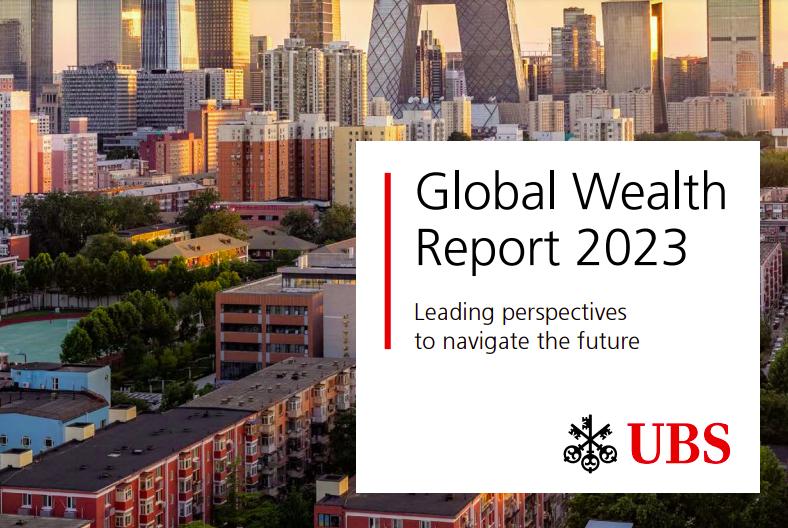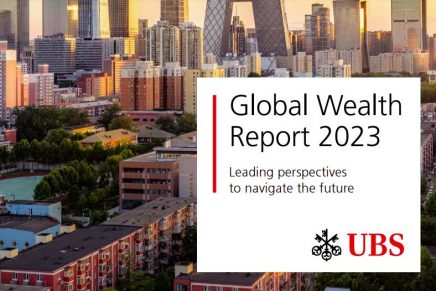Much of the decline in wealth was driven by high inflation and the appreciation of the US dollar against many other currencies, says World Wealth Report.

Global Wealth Declines in 2022: Insights from the World Wealth Report; World Wealth Report 2023 @UBS
The latest Global Wealth Report predicts global wealth to reach USD 629 trillion by 2027, despite 2022 being the first year of wealth decline since 2008.
The recently released fourteenth edition of the World Wealth Report, jointly presented by Credit Suisse and UBS, paints a striking picture of the global wealth landscape in 2022. For the first time since the global financial crisis of 2008, global wealth has experienced a decline, primarily attributed to high inflation and the appreciation of the US dollar against many other currencies. However, amidst these challenges, the report offers a glimmer of hope, projecting a brighter outlook for the years ahead.
The Global Wealth Decline:
Measured in current nominal USD, the report reveals that total net private wealth fell by USD 11.3 trillion, equating to a 2.4% decline, bringing the total to USD 454.4 trillion by the end of 2022. Wealth per adult also declined by USD 3,198, or 3.6%, reaching USD 84,718 per adult. The primary factor behind this decline was the appreciation of the US dollar against numerous currencies. Interestingly, while financial assets contributed significantly to this wealth reduction, non-financial assets, particularly real estate, remained resilient even in the face of rapidly rising interest rates.
Regional Trends:
The wealth decline in 2022 was not evenly distributed across the globe. The report highlights that wealthier regions, such as North America and Europe, bore the brunt of the losses, shedding a staggering USD 10.9 trillion. In contrast, Latin America experienced a total wealth increase of USD 2.4 trillion, largely due to an average 6% currency appreciation against the US dollar.
Market-Specific Findings:
When examining individual markets, the United States, Japan, China, Canada, and Australia led the list of losses in 2022. Conversely, Russia, Mexico, India, and Brazil recorded the largest wealth increases. Despite reductions in mean wealth compared to 2021, Switzerland continued to top the list in terms of wealth per adult, followed by the USA, Hong Kong SAR, Australia, and Denmark.
Demographic Impact:
The report offers insights into how different demographics fared in 2022. Generation X and Millennials in the USA and Canada did relatively well but were not immune to the overall wealth reduction. Notably, non-Hispanic Caucasians in the USA saw their wealth decrease, while African-Americans experienced minimal impact. In contrast, Hispanics achieved substantial growth, driven by their higher holdings of housing assets compared to financial assets.
Reduction in Wealth Inequalities:
Despite the decline in aggregate wealth, the report reveals a reduction in overall wealth inequality, with the wealth share of the global top 1% falling to 44.5%. The number of USD millionaires worldwide declined by 3.5 million in 2022 to 59.4 million. However, it is crucial to note that this figure does not account for the 4.4 million “inflation millionaires” who would no longer qualify if the millionaire threshold were adjusted for inflation.
A Glimpse of Hope:
Amidst the challenges of 2022, there is a silver lining in the report’s projections. It forecasts that global wealth will rise by 38% over the next five years, reaching an impressive USD 629 trillion by 2027. This growth will be primarily driven by middle-income markets. Wealth per adult is projected to reach USD 110,270, and the number of millionaires is set to rise to 86 million, with the number of ultra-high-net-worth individuals (UHNWIs) expected to reach 372,000.
Conclusion:
The World Wealth Report for 2023 provides a comprehensive analysis of global wealth trends, highlighting the challenges faced in 2022 and the promising outlook for the years ahead. While the decline in wealth in 2022 was driven by high inflation and currency fluctuations, the report underscores the resilience of non-financial assets and the potential for global wealth to rebound and grow substantially in the coming years. These insights serve as a valuable resource for understanding the ever-evolving nature of wealth creation and its broader societal impact.




